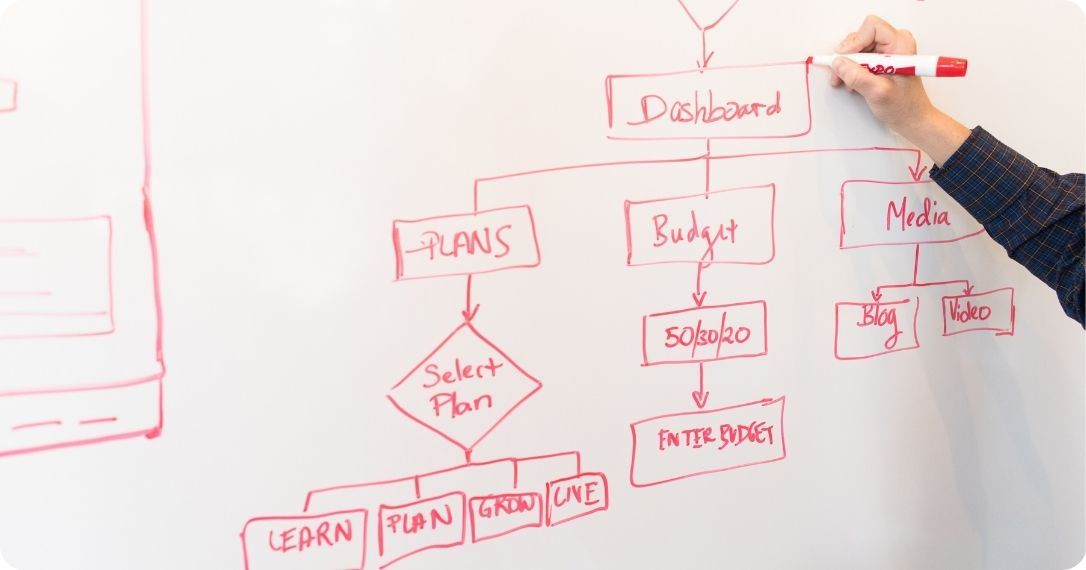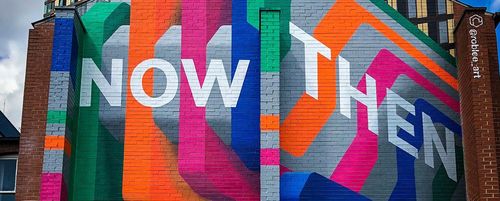

What Can Business Do to Improve Its Productivity?

19 June, 2025
Share this article
If working long hours and answering emails on the weekend actually worked, we would all be thriving by now. But most people are just tired and burned out.
I work with teams in different time zones and under tight deadlines, so being productive and using my time well matters a lot to me.
Cramming more into one day might work for a while, but not in the long run. What actually helps is learning to focus on what really matters, without getting slowed down by useless processes or constant distractions.

This article is about that. Clear goals. Systems that make sense. Tools that support the work instead of complicating it. And a culture that gives people the space to focus and do their best.
Start With Clear Goals and KPIs
Imagine trying to build a house without knowing what you are building. You just start putting up walls in random places, hoping it turns out okay. That is a recipe for disaster.
It’s the same in a company or in smaller teams. Why do we do what we do? Is it to attract great clients or just to cash our paycheck? When goals are vague, teams spin their wheels. Everyone looks busy, but nothing truly moves forward.

To make progress, you need clarity. Start by setting goals that are:
- Clear and specific, so everyone knows what they are working toward
- Broken down into steps that each person or team can take on
- Easy to find and refer to, not buried in a forgotten document
- Backed by KPIs that show real direction, not just motion
But clarity is not something you mention once and forget. It has to be part of the daily routine. Use check-ins and kickoffs to bring focus back to what matters. Talk about progress often. Keep it clear and straightforward.
KPIs help too. Not as a way to control people, but as a way to see what is working. Choose metrics that lead to action, not ones that just fill a report.
When your team knows where they are going and has the right tools to measure progress, productivity does not have to be pushed. It flows naturally. Steady. Focused. In the right direction.

Optimize Processes, Not Just People
Before you ask your colleagues to deliver something faster, take a good look at the workflow you have set up. Most of the time, it is not the people slowing things down. It is the process.
Bottlenecks. Unnecessary steps or approvals. Confusing handovers. Tools that do not connect. This is where time wasting happens. And this is where employee productivity starts to improve.
Here’s what helps employee engagement:
- Map out the key workflows and see where things get stuck
- Cut or simplify steps that don’t bring real value
- Automate repetitive tasks so your team can focus on the important stuff
- Make it easier for people to work together without jumping through hoops
You don’t need a big transformation plan. Just pick one process that clearly isn’t working and fix it. Talk to the people who use it every day. They’ll tell you what’s broken.
Every time you simplify something, you give time back to your team. And when the system makes sense, people do better work. They’re not chasing approvals or wasting time. They’re doing what they were hired to do.
It’s easy to focus on performance and ask why someone isn’t moving faster. But a lot of the time, it’s not about effort. It’s about friction. If you want boosting productivity, don’t push harder. Clear the way.

Invest in the Right Tech
It is annoying to use tools that have errors or slow you down. You want something that helps you move faster, not something that makes you feel as slow as a snail in the rain.
If you are a knowledge worker, use the latest tech to do your work faster and better. Tools like AI, AI agents, or anything built to make work more efficient can make a real difference. Choose tools that work smoothly and support your tasks, instead of getting in the way.
That’s why choosing the right tech matters:
- Go for tools that make work easier, not more complicated
- Make sure they work well with what you already use
- Pick tools your team actually wants to open; if they hate using it, it’s not the right one
- Keep the stack simple, so no one needs five apps to finish one task
This isn’t about chasing trends. It’s about being practical. Where is your team losing time? What’s frustrating them? Start there.
Because in the end, increase productivity doesn’t come from trying harder. It comes from removing the daily headaches. The right tools do that: quietly, but effectively.

Train People Continuously
If your team is still developing its productivity skills, spend time teaching them how to be more productive or efficient, with very concrete advice. For example, say things like “use this prompt for AI to validate a first draft.”
What you have learned in years cannot be learned in a few minutes. Sometimes you have to walk through the same steps several times before it clicks.
Training shouldn’t stop after onboarding. It needs to be part of how your team works:
- Keep sessions short, relevant, and tied to real tasks
- Focus on skills that actually help, like time management, communication, project management or using key tools
- Make learning feel normal, not like a test
- Encourage the team to share what they know, so the learning spreads
You don’t need a big budget or full-day workshops. Even a quick session on how to run a tighter meeting or use a feature in your CRM can save hours later.
The goal is to make growth feel natural. People should feel safe asking questions and not knowing everything right away. That mindset shift alone makes a difference. It removes the fear of messing up and replaces it with curiosity.

Improve Time Management Company-Wide
Time management isn’t just a personal habit. It’s part of the culture. You can have the most organized person on the team, but if the rest of the company runs on chaos, it won’t matter much.
Time management needs to be supported at every level:
- Create a culture that values focus and limits constant interruptions
- Cut the meetings you don’t need, and make sure the ones you keep have a clear reason
- Use async communication more, so people don’t need to sit through ten calls just to stay informed
- Set clear, reasonable expectations around response times and availability
Most people want to do focused, meaningful work. But they rarely get the space for it. Back-to-back calls, nonstop messages, unclear priorities: all of these get in the way.
Start by blocking time for deep work and protect it like you would a meeting. Make it part of your team routine. Let people know it’s okay to mute notifications. Say no to meetings that don’t move things forward.
When leaders model good time habits, the rest of the team picks it up. And when the company backs it up with clear systems, people use their time better. Not by working longer, but by working with intention.

Cut Down on Distractions
Distractions are everywhere. Open tabs, constant Slack messages, nonstop notifications: all of them pull people out of focus. Even quick interruptions break the flow and are hard to recover from.
If you want real productivity, you have to protect your focus. Not just for one person, but for the whole team.
Here’s where to start:
- Set simple habits around digital hygiene, like turning off unnecessary notifications
- Encourage deep work blocks where people can concentrate without being disturbed
- Create workspaces, both online and offline, that support focus
- Make it clear that not everything needs an instant reply — urgency should not be the norm
You don’t need to change everything at once. Even small steps can help. Try setting a quiet window in the morning. Move routine meetings to the afternoon. Let people go offline when they need to finish something important.

Engage, Don’t Micromanage
I hate micromanagement :) It should not even be called “management.” I do not think someone is a good manager if they need to check every single thing every single time. Sure, trust is difficult, but you can start with caution. Give people the trust to do their work, check occasionally or at random, and put things on track when you see things are not understood.
People do their best work when they feel trusted. When they know their input matters and they have space to make decisions, they step up. They take ownership. And this is what you, as a manager, want to see in your team — ownership of their projects.
Otherwise, it is just execution for the paycheck, with a question asked at the end about whether the outcome was good or bad.
Micromanagement slows things down, creates stress, and makes people feel like they are just there to follow instructions.
Instead of trying to control every step, try this:
- Share the bigger picture so people understand the why, not just the what
- Give them the freedom to figure out the how, using their own strengths (ask “how do you think we can get there?”)
- Ask for input early, especially from the people closest to the work
- Focus on results and progress, not busywork or constant updates
When you treat people like professionals, they rise to the occasion. They get more creative, take more responsibility, and care more about the outcome.

Build a Culture That Supports Well-Being
I worked in a workaholic environment, and I also worked in places where having time for your life was not seen as something to be punished at the next evaluation. I love my work and my job, but I also want to live and stay healthy, not collapse from pushing too hard.
If you have a team, you will be appreciated for caring about their well-being and helping them stay healthy. It is not a weakness. It is part of building a team that can actually do great work for more than just a few months.
This starts with a culture that values well-being, not just output:
- Encourage real work-life balance by making boundaries clear and respected
- Set expectations that are realistic, both for workload and availability
- Talk about mental health in a way that feels real, not like a slogan
- Lead by example - when leaders disconnect and rest, others feel safe to do the same
Make time to check in. Not just about tasks, but about how people are actually doing. Offer flexibility when you can and create space for real breaks.

Learn from Others
You don’t have to start from zero. Sometimes the smartest thing you can do is look around and see what’s already working for other teams. Productivity isn’t one-size-fits-all, but good ideas can be adapted.
Pay attention to teams that work with focus and ease. What are they doing that you’re not?
- Look at how high-performing companies structure their weeks and manage their time
- See how they use async communication to cut back on meetings
- Notice the small habits that support focus, ownership, and collaboration
- Talk to people in your industry and ask what’s actually helped their teams work better
You don’t need to follow every trend. The point is to borrow what fits, try it out, and shape it for your team. Maybe that means testing no-meeting Wednesdays. Maybe it means setting clear hours for when people should be online.

Track, Adjust, Repeat
Improving productivity isn’t a one-time fix. It’s something you keep working on. What helps today might slow you down tomorrow. The key is to stay curious and keep adjusting along the way.
This isn’t about chasing numbers. It’s about noticing what actually helps your team work better.
- Keep track of what’s working and what’s not, using both data and real feedback
- Talk to your team regularly — not just through surveys, but real conversations
- Be open to changing habits, schedules, or tools when something feels off
- See productivity as a cycle, not a finish line
Sometimes the shift is small. A shorter meeting. A smoother handoff. A better tool. Other times, it’s a deeper rethink: how your team collaborates or how work gets assigned.

Conclusion
Productivity isn’t a magic trick, but it’s not a mystery either. It starts with a few simple things.
Be clear about what matters. Build systems that make work easier, not harder. Give your team the tools, the training, and the trust they need to do their job well. Notice what’s working. Be ready to adjust when it’s not. And remember: people do their best when they feel good, not when they’re under pressure.
Remote work
Keep up to date with our most recent articles, events and all that Pluria has to offer you.
By subscribing to the newsletter you agree with the privacy policy.

In the last two years I’ve been working remotely from over 20 countries but no part of the world compares to Latin America: countries and cultures spreading over two continents with climates[...]
04 December, 2023

A massive move to hybrid work
In 2022, 60% of companies will switch to a hybrid working model, and a third of them will fail on their first attempt to work from anywhere, Forrester p[...]
04 December, 2023

When the employees in the most innovative company on the planet rally against their CEO because he wants them back in the office three days a week, it is a sign that it is not enough to be innovative in tec[...]
04 December, 2023